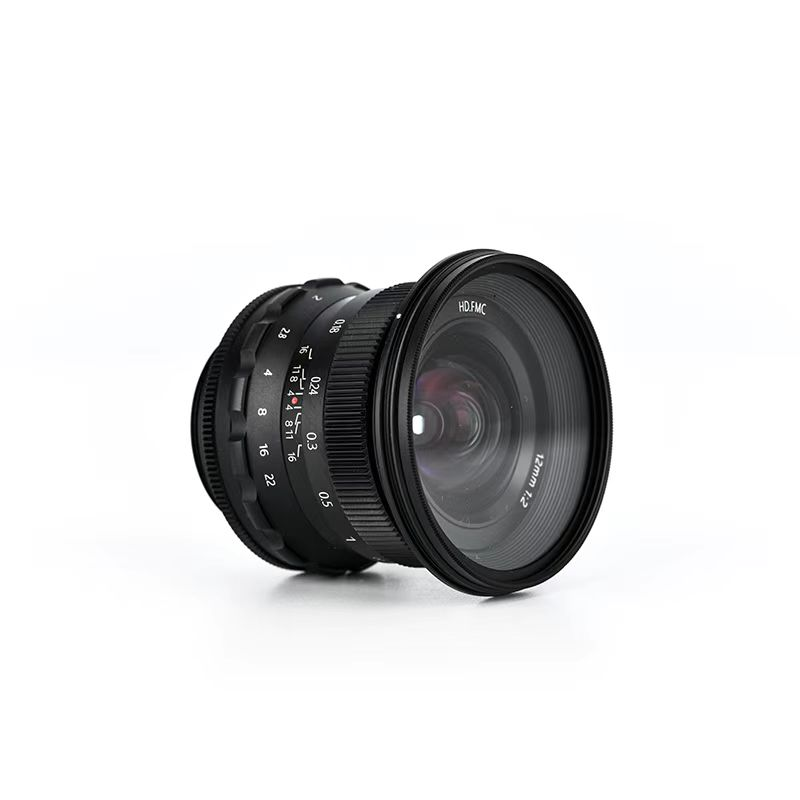Line scan lenses are employed across a wide array of industries, including industrial automation, printing and packaging, and lithium battery manufacturing. These versatile optical devices have become indispensable tools in modern manufacturing processes due to their high-resolution imaging, rapid scanning capabilities, and adaptability to diverse applications.
1. Industrial Automation
In the field of industrial automation, line scan lenses are extensively utilized for quality inspection, dimensional measurement, and barcode recognition. These lenses ensure that products on the production line meet stringent quality standards, thereby enhancing overall production efficiency. For example, when inspecting small components such as electronic parts, where even minor defects can lead to functional failures, line scan lenses provide rapid, high-resolution scans with sufficient accuracy. This capability is crucial for detecting issues like bent pins or misaligned connectors, ensuring only flawless components proceed to the next stage of production.
Moreover, the high-speed scanning capability of line scan lenses enables comprehensive real-time monitoring of the entire production line. By continuously capturing images at high speeds, these lenses provide immediate feedback on product quality and performance. This real-time data allows manufacturers to promptly identify and address issues, minimizing downtime and reducing waste. For instance, in automotive assembly lines, line scan lenses can inspect parts as they move along the conveyor belt, ensuring each component meets required specifications before being assembled into the final product.
2.Printing and Packaging
In the printing and packaging sector, line scan lenses are critical for evaluating print quality, color consistency, and packaging material integrity. Their high-resolution capabilities capture intricate image details, ensuring prints meet stringent quality requirements. In the printing industry, line scan lenses are used to inspect printed materials for defects such as smudges, ink bleed, or misalignment. This level of precision is essential for maintaining brand consistency and customer satisfaction.
For packaging, line scan lenses play a vital role in ensuring that packaging materials are free from defects and meet regulatory standards. They can detect variations in thickness, texture, and color, which are crucial for maintaining the integrity of the packaging. For example, in the food and beverage industry, line scan lenses can verify that labels are correctly applied and that packaging materials are free from contaminants, ensuring product safety and compliance with health regulations.
3. Lithium Battery Manufacturing
In the lithium battery manufacturing industry, line scan lenses play a pivotal role. For instance, in the lithium battery PACK line gluing positioning detection, the visual system equipped with a line scan lens can swiftly capture box Mark points to determine positional offsets. This information guides robots to perform position compensation and complete gluing tasks, ensuring the quality and consistency of battery packs. The accuracy provided by line scan lenses is particularly important in this industry, where even slight deviations can affect the performance and safety of the batteries.
Additionally, line scan lenses are used in other stages of battery production, such as inspecting electrodes and separators for defects. The high-resolution imaging capabilities of these lenses allow for the detection of microscopic flaws that could compromise the battery’s performance. This ensures that only high-quality batteries reach the market, enhancing both safety and reliability.
4. Automatic Optical Inspection Systems (AOI)
Line scan lenses are widely integrated into automatic optical inspection systems (AOI) due to their fast response times and low noise levels. These systems are essential for identifying potential defects in electronic components, such as circuit boards. Line scan lenses can rapidly scan objects and accurately identify issues like solder joint defects, missing components, or incorrect component placement. The speed and precision of line scan lenses make them ideal for use in AOI systems, where quick and reliable inspections are critical for maintaining high production standards.
In summary, line scan lenses, characterized by their high resolution, high-speed scanning, and adaptability, significantly contribute to multiple industries by improving production efficiency and product quality. Whether it’s ensuring the flawless assembly of electronic components, maintaining the integrity of printed materials, or guaranteeing the safety and performance of lithium batteries, line scan lenses are an essential tool in modern manufacturing. Their versatility and precision make them indispensable for achieving high standards.
Post time: Feb-28-2025








